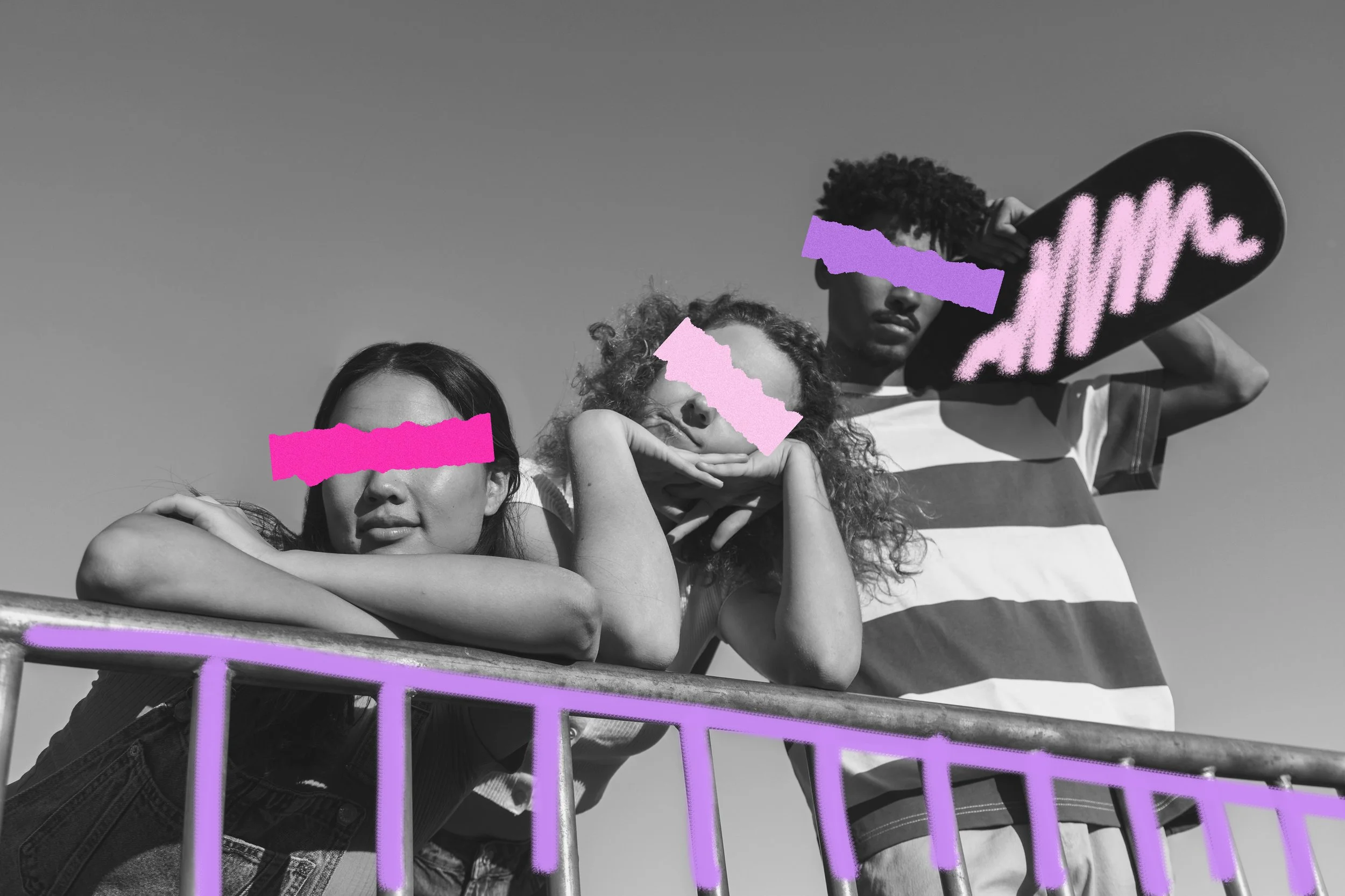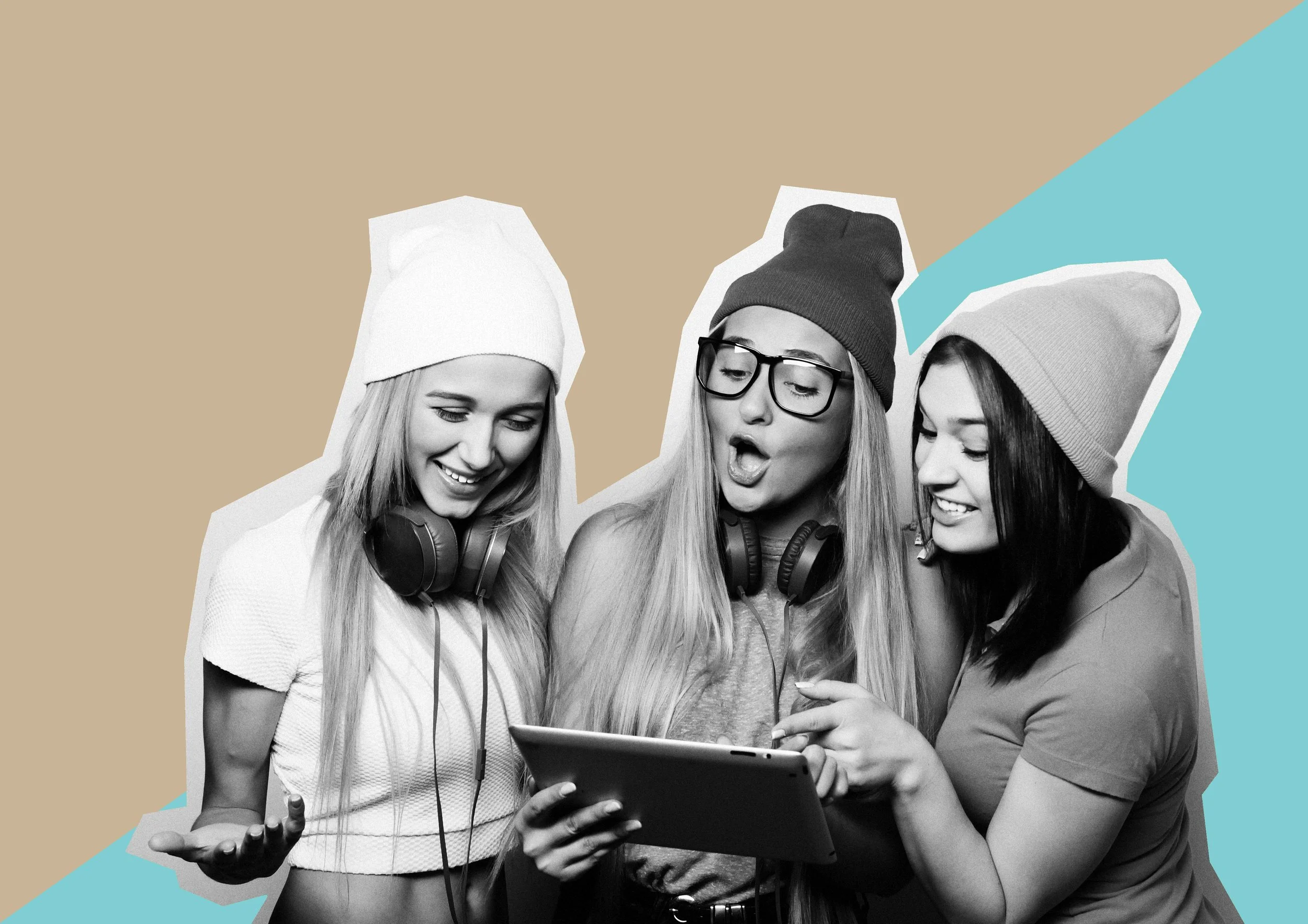Gen Z officially has bad taste — and it’s brilliant
Ugly on purpose, sad on the feed, and spiritually glittery: welcome to the new aesthetic order.
Let’s face it. A new wave of aesthetic standards has taken over, and it’s not here to please your mom, your design professor, or even your inner minimalist.
From chaotic collages to soft-lit crying selfies, Gen Z has turned rebellion into routine, turned feelings into filters, and built entire belief systems out of Pinterest boards and TikTok sounds. And while many of these trends began as counterculture or satire, they’ve quickly been absorbed by the algorithm and repackaged as… the new norm.
Here’s a guide to the post-2020 symbolic ecosystem — where taste is questionable, but the cultural codes are crystal clear.
1. That Girl & the Clean Aesthetic
She wakes up at 6am, journals, does Pilates in a beige set, and drinks matcha in a ribbed glass. Her life is linen sheets, soft light, and glass skin — all curated to look effortless. This aesthetic sells wellness as quiet luxury and discipline as self-love. It’s soothing, elegant, and deeply class-coded. Think Hailey Bieber, Rhode Skin, Glossier, Alo Yoga. But beneath the glow lies a new kind of pressure: perfection disguised as balance.
Aesthetic: beige linens, soft lighting, matcha in a ribbed glass.
Symbolic value: self-care as high-functioning perfection.
The trap: It’s wellness—packaged as performance. Deeply class-coded.
Platform: TikTok, Pinterest.
2. Ugly as a Design Statement
This is design that screams on purpose: illegible fonts, chaotic collages, flash photos, pixel drag — the uglier, the cooler. Born as a rebellion against millennial minimalism, it’s all about irony, chaos, and anti-polish. Think Gen Z portfolios on Behance, Tumblr-core posters, or brands that look like memes. The twist? It’s already become a formula. If it’s not messy, it’s not relevant.
Aesthetic: illegible fonts, chaotic grids, pixelated memes, flash photography.
Symbolic value: irony, anti-perfection, rebellion against millennial minimalism.
The trap: If your visuals aren’t messy enough, you’re irrelevant.
Platform: IG, Tumblr revivals, Behance portfolios.
3. Burnout Aesthetic / Sad Girl Energy
Crying selfies, Mitski lyrics, and captions that whisper “I’m not okay” — but in a beautifully curated way. This aesthetic turns emotional exhaustion into a moodboard. It's raw, poetic, and painfully relatable. But when sadness becomes content, the line blurs: is it expression… or aestheticized suffering?
Aesthetic: crying selfies with Mitski lyrics, grey-toned filters, soft serif captions.
Symbolic value: emotional openness, glamorized vulnerability.
The trap: Monetizing mental health. Romanticizing breakdowns.
Platform: Twitter/X, TikTok.
4. Pinterest Spirituality / WitchTok
Think moon phases, tarot decks, crystal grids, and manifestation rituals — all perfectly lit for Reels. It blends mysticism with moodboard aesthetics: sacred, soft, and highly shareable. But when spirituality turns into a trend, depth often gets replaced by vibes, manifesting and affirmations.
Aesthetic: moon symbols, tarot decks, crystals on golden trays.
Symbolic value: ancestral wisdom, divine feminine, empowerment.
The trap: Shallow syncretism and spiritual consumerism.
Platform: TikTok, IG, Pinterest.
5. Tokenized Diversity
Every campaign has the diverse group shot: different skin tones, body types, and one person with blue hair. Check. It looks inclusive, sounds progressive, and feels like progress. But when diversity is just aesthetic — not systemic — it’s representation without real change.
Aesthetic: diverse casting, pastel inclusivity, woke slogans.
Symbolic value: justice, representation, progress.
The trap: When inclusion is just a checkbox, not a structure.
Platform: fashion campaigns, beauty brands.
6. Aesthetic Identity as Digital Tribe
You’re not just into a vibe — you are the vibe. Cottagecore, Y2K, dark academia, baddie, goblincore… pick your tribe. It’s self-expression through style, mood, and micro-aesthetics. Think of moodboards as your personality, and Pinterest as your soul. But the algorithm rewards consistency, not authenticity — and soon, you're performing a niche instead of living your truth.
Aesthetic: cottagecore, goblincore, baddie, Y2K, dark academia, glitchcore.
Symbolic value: self-expression, belonging.
The trap: You’re designing content for your niche, not yourself.
Platform: TikTok, Discord, IG.
7. Irony as Survival / Cynicism as Armor
“I’m broken lol.” “Nothing matters”,“Here’s my trauma, but make it a meme.” This aesthetic wears sarcasm like a shield — clever captions, deadpan delivery, and dark humor wrapped in emojis. It’s emotional intelligence, but make it ironic until it stops you from feeling anything at all.
Aesthetic: deadpan TikToks, absurd shitposts, emojis mixed with dark captions.
Symbolic value: emotional intelligence dressed in sarcasm.
The trap: Fear of being earnest. Fear of cringe.
Platform: Twitter/X, IG Stories.
8. Neurodivergence as Aesthetic
Fast cuts, bold captions, overstimulated edits — it’s “ADHD-core” meets “trauma brain” with a sprinkle of diagnosis vibes. Self-labeling becomes self-branding. It’s validating, relatable, and algorithm-friendly. But when mental health becomes a visual trend, the line between awareness and aesthetic gets blurry.
Aesthetic: rapid-fire edits, giant subtitles, chaotic info dumps.
Symbolic value: validation, community, self-awareness.
The trap: Medicalizing personality traits. Diagnosis by trend.
Platform: TikTok, Reels, forums.
When Aesthetics Become Doctrine
French sociologist Émile Durkheim argued that society functions through shared rituals, symbols, and collective beliefs — and today, the media has become both the priest and the altar. TikTok, Instagram, and Pinterest aren’t just platforms; they’re where meaning is made, performed, and enforced.
According to Uses and Gratifications Theory, we don’t passively consume content — we seek it out to fulfill emotional, social, and identity-based needs. Every scroll, like, and share is part of how we define who we are (or want to be).
Meanwhile, Cultivation Theory reminds us that the more we’re exposed to a certain worldview, the more we believe it reflects reality. If your feed is filled with sad girls, beige morning routines, or witchy rituals, that becomes the cultural baseline — not just a trend, but a truth.
In the end, aesthetics are no longer just style. They’re curriculum. They teach us what’s desirable, what’s valid, what’s “real.” And if we’re not careful, we might mistake performance for presence — and branding for being.
So when Gen Z embraces chaos, irony, or curated vulnerability, they’re not just expressing themselves — they’re inheriting a new symbolic order. One where identity is scrollable, emotions are aestheticized, and bad taste… is just the new orthodoxy.
Because in the end, Gen Z didn’t kill good taste. They just rebranded it — with glitter, glitches, and a deeply strategic wink.



